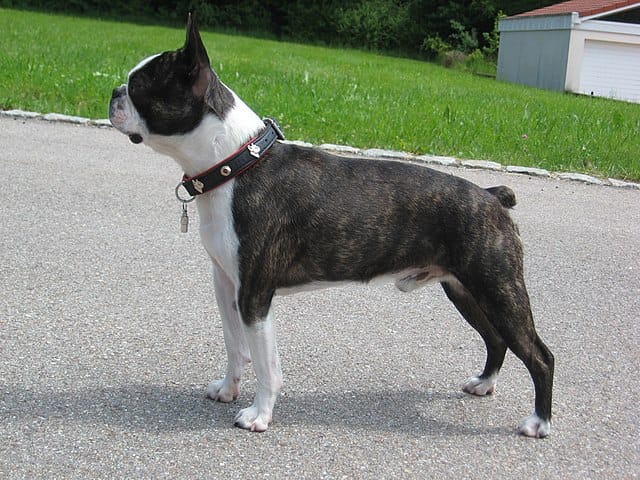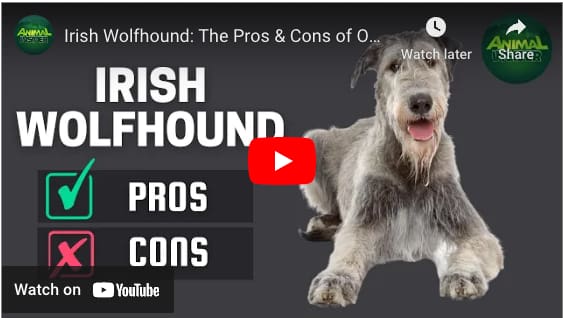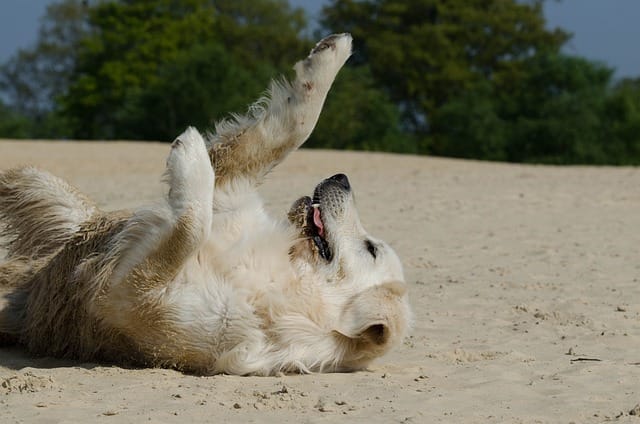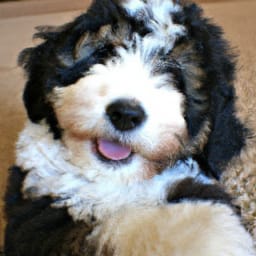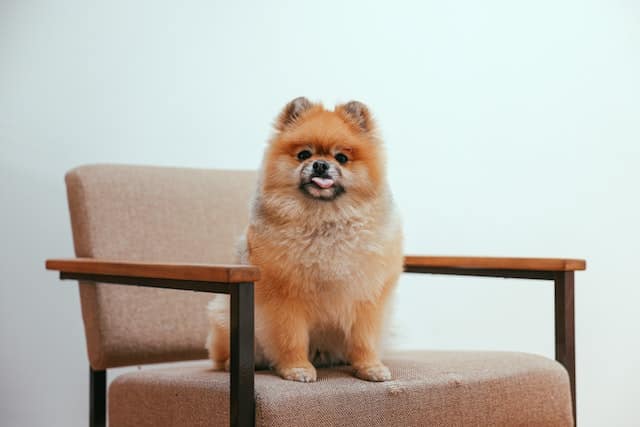Boston Terrier Shedding: Why Do Boston Terriers Shed?
Do Boston Terriers Shed? If you’ve ever owned or considered owning a Boston Terrier, you’ve probably wondered why they shed so much. Boston Terriers are known for their adorable appearance and friendly nature, but their shedding can sometimes be a challenge for pet owners. In this article, we will explore the reasons behind Boston Terrier shedding and provide some helpful tips for managing and reducing it. So, if you’re a proud owner of a Boston Terrier or thinking about getting one, keep reading to discover the secrets behind their shedding habits!
Causes of Shedding
Natural shedding cycle
Boston Terriers, like all dogs, have a natural shedding cycle. This shedding cycle is influenced by factors such as genetics and environmental conditions. It is important to understand that shedding is a normal and necessary process for dogs to maintain a healthy coat.
Breed characteristics
The breed characteristics of Boston Terriers also play a role in their shedding patterns. Boston Terriers have a short and smooth coat, which may result in less overall shedding compared to breeds with longer and thicker coats. However, this does not mean that Boston Terriers are completely non-shedding dogs. They still shed to some extent, especially during certain seasons or if they have an underlying health issue.
Changes in seasons
Seasonal changes can have a significant impact on a Boston Terrier’s shedding patterns. Just like humans, dogs’ coats tend to change with the seasons. Boston Terriers may experience heavier shedding during the spring and fall as they prepare for warmer or cooler weather. During these times, it is common for them to shed their winter or summer coat to make way for a new one.
Health issues
Unfortunately, shedding can also be a symptom of various health issues in Boston Terriers. Skin allergies, hormonal imbalances, nutritional deficiencies, and certain medical conditions can all contribute to excessive shedding. If you notice any abnormal changes in your Boston Terrier’s shedding patterns, it is essential to consult with a veterinarian to rule out any underlying health issues.
Frequency of Shedding
Normal shedding patterns
Normal shedding patterns for Boston Terriers can vary from dog to dog. In general, they are considered moderate shedders. This means that they will shed some hair year-round, but the amount is usually manageable and not overwhelming. Regular grooming and proper care can help keep their shedding under control.
Excessive shedding
Excessive shedding, on the other hand, can be a cause for concern. If you notice that your Boston Terrier is shedding more hair than usual, it could be a sign of an underlying health issue or a problem with their coat. Excessive shedding can also be triggered by stress, changes in diet, or environmental factors. If you suspect excessive shedding, it is best to consult with a veterinarian for a proper diagnosis and appropriate treatment.
Prevention and Management
Regular grooming
Regular grooming is a crucial part of managing shedding in Boston Terriers. Brushing your dog’s coat regularly helps to remove loose hair and prevent it from ending up all over your home. Use a soft-bristle brush or a rubber grooming mitt to gently brush through your Boston Terrier’s coat. This not only helps with shedding but also promotes a healthy and shiny coat.
Bathing frequency
Proper bathing is another essential aspect of managing shedding in Boston Terriers. Bathing your dog too frequently can strip their coat of natural oils, leading to dryness and increased shedding. On the other hand, not bathing them enough can result in a buildup of dirt and debris, which can contribute to shedding. The ideal bathing frequency for Boston Terriers is approximately once every 4-6 weeks, or as needed.
Healthy diet and supplements
A nutritious diet plays a vital role in maintaining a healthy coat and reducing shedding in Boston Terriers. Make sure to feed them high-quality dog food that is rich in essential nutrients, such as omega-3 fatty acids and biotin, which promote a healthy coat. Additionally, certain supplements, such as omega-3 fish oil or specialized coat supplements, can help improve coat health and reduce shedding.
Controlled environment
Creating a controlled environment can also help manage shedding in Boston Terriers. Investing in a high-quality air purifier can help reduce airborne allergens and pet dander, which can contribute to shedding. Regularly cleaning and vacuuming your home, especially areas where your dog spends most of their time, can also help minimize shedding and keep your home clean.
Visiting a veterinarian
If your Boston Terrier’s shedding is excessive or accompanied by other concerning symptoms, it is crucial to schedule a visit to the veterinarian. A professional assessment can help identify any underlying health issues that may be contributing to the excessive shedding. The veterinarian may perform tests, such as bloodwork or skin scrapings, to determine the cause of the shedding and recommend appropriate treatment options.
Symptoms of Excessive Shedding
Visible hair loss
Excessive shedding can result in visible hair loss in Boston Terriers. You may notice patches of thinning or bald spots on their coat, especially in areas where shedding is more prominent, such as the back, tail, or hindquarters. If you observe significant hair loss, it is essential to consult with a veterinarian for evaluation and proper diagnosis.
Thinning of hair
Another symptom of excessive shedding is a noticeable thinning of hair. If your Boston Terrier’s coat appears thinner or less dense than usual, it could be a sign of an underlying issue. Thinning of hair can be caused by factors such as nutritional deficiencies, hormonal imbalances, or skin allergies. Seeking veterinary advice can help identify the cause and provide appropriate treatment.
Skin issues
Excessive shedding in Boston Terriers can sometimes be accompanied by skin issues. Irritated or inflamed skin, excessive scratching or licking, redness, rashes, or sores can be indicators of underlying skin allergies or other dermatological conditions. If you notice any abnormalities with your dog’s skin, it is important to consult with a veterinarian for proper diagnosis and treatment.

Allergies and Shedding
Allergic reactions
Allergies can contribute to shedding in Boston Terriers. Just like humans, dogs can develop allergies to various environmental triggers, such as pollen, dust mites, or certain foods. Allergic reactions can manifest as excessive shedding, skin issues, itchiness, and other symptoms. If you suspect that your Boston Terrier may have allergies, it is best to seek veterinary advice to establish an appropriate management plan.
Managing allergies in Boston Terriers
Managing allergies in Boston Terriers requires identifying and minimizing exposure to allergens. Your veterinarian may recommend allergy testing to determine the specific triggers causing your dog’s allergic reaction. Treatment options may include environmental modifications, such as removing carpeting or using hypoallergenic bedding, as well as medications, such as antihistamines or immunotherapy, to help manage the symptoms and reduce shedding.
Shedding vs. Hypoallergenic
Understanding hypoallergenic breeds
Hypoallergenic breeds are often sought after by individuals with allergies or asthma. These breeds are believed to produce fewer allergens, such as dander or saliva, which can trigger allergic reactions. However, it is important to note that no dog breed is completely hypoallergenic, as allergens can still be present to some degree.
Boston Terriers and hypoallergenic qualities
Boston Terriers are not considered to be hypoallergenic dogs. While they may produce fewer allergens compared to breeds with longer coats, Boston Terriers still have dander, which is a common allergen. If you or someone in your household has allergies, it is recommended to spend time with a Boston Terrier before bringing one into your home to see if any allergic reactions occur.
Dealing with Shedding
Regular brushing
Regular brushing is a simple yet effective way to deal with shedding in Boston Terriers. Brushing your dog’s coat at least once or twice a week helps to remove loose hair and prevents it from ending up on your furniture or clothing. Use a brush suitable for short-haired breeds, such as a soft-bristle brush or a rubber grooming mitt. Be gentle and thorough when brushing, paying attention to areas where shedding is more pronounced.
Use of shedding tools
In addition to regular brushing, using shedding tools can help manage shedding in Boston Terriers. Tools such as de-shedding brushes or grooming gloves are designed to remove loose hair more effectively. These tools reach deeper into the coat, helping to remove the hair that would otherwise end up on your floors and furniture. Incorporating these tools into your grooming routine can help keep shedding under control.
Cleaning and vacuuming
Regularly cleaning and vacuuming your home is essential when dealing with shedding. Vacuuming not only removes loose hair from your floors and furniture but also helps to minimize the amount of allergens and dander in your home environment. Additionally, dusting surfaces and wiping them down frequently can help reduce the accumulation of pet hair and dander.
Reducing pet dander
To further reduce pet dander in your home, consider using air purifiers or filters specifically designed to capture allergens. These devices can help improve the air quality in your home by trapping pet dander and other airborne particles. Changing air filters regularly and maintaining a clean and well-ventilated home can also contribute to reducing pet dander and shedding.
Creating a designated pet space
Creating a designated pet space in your home can help contain shedding and minimize its impact on your living areas. Whether it is a specific room or a cozy corner, having a space where your Boston Terrier spends most of their time can help concentrate shedding in one area. Use washable mats or blankets that can be easily cleaned to minimize the spread of hair throughout your home.
Tips for Managing Shedding
Using lint rollers
Lint rollers are handy tools for managing shedding in Boston Terriers. Keep a few lint rollers around your home, especially in areas where your dog likes to relax or sleep. Simply roll them over your furniture, clothing, or other surfaces to quickly and easily remove any loose hair. Lint rollers are particularly useful for keeping your clothes hair-free when you’re on the go.
Washing pet bedding frequently
Frequently washing your Boston Terrier’s bedding is an essential part of managing shedding. Bedding can accumulate a significant amount of hair and dander, contributing to shedding in your home. Washing the bedding on a regular basis helps to keep it clean and free of loose hair. Use pet-friendly laundry detergent and follow the manufacturer’s instructions for optimal results.
Regular grooming routine
Establishing a regular grooming routine is essential for managing shedding in Boston Terriers. In addition to regular brushing, make sure to check your dog’s ears, eyes, and teeth regularly for any signs of infection or abnormalities. Keeping their nails trimmed and their coat well-maintained not only helps with shedding but also promotes overall health and well-being.
Maintaining a clean home environment
Maintaining a clean home environment goes hand in hand with managing shedding. In addition to regular cleaning and vacuuming, make it a habit to wipe down surfaces, mop floors, and remove any visible hair from your home. This proactive approach helps to minimize the accumulation of hair and dander and keeps your home looking clean and tidy.
Understanding Boston Terrier Hair
Types of Boston Terrier coats
Boston Terriers generally have short and smooth coats. Their hair is fine and sleek, which contributes to their unique appearance. The short coat of a Boston Terrier is relatively low-maintenance and requires less grooming compared to breeds with longer or thicker coats. However, it is essential to remember that even short-haired dogs like Boston Terriers still shed to some extent.
Colors and patterns
Boston Terriers are known for their distinctive black and white coats, but they can also come in other colors and patterns. Common coat colors include brindle, seal, and a combination of black, white, and brindle. The specific color and pattern of a Boston Terrier’s coat are determined by their genetics. Regardless of the color, all Boston Terriers shed to some degree.
Hair growth cycle
Understanding the hair growth cycle of Boston Terriers can provide insights into their shedding patterns. Like all dogs, Boston Terriers go through an active growth phase, a rest phase, and a shedding phase. During the growth phase, their hair follicles produce new hair, while the rest phase allows the hair to remain in place. The shedding phase occurs when old hair is shed to make room for new growth.
Conclusion
Proper care is essential for managing shedding in Boston Terriers and keeping them happy and healthy. Regular grooming, a balanced diet, and regular veterinary check-ups play a crucial role in maintaining a healthy coat and minimizing shedding. Understanding the causes and frequency of shedding, as well as implementing preventive measures, can help keep your Boston Terrier’s shedding under control. By following the tips and suggestions outlined in this article, you can create a clean and comfortable environment for both you and your furry friend.


